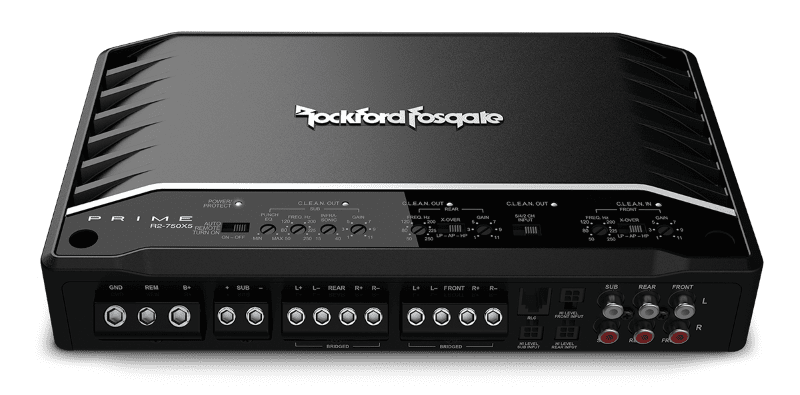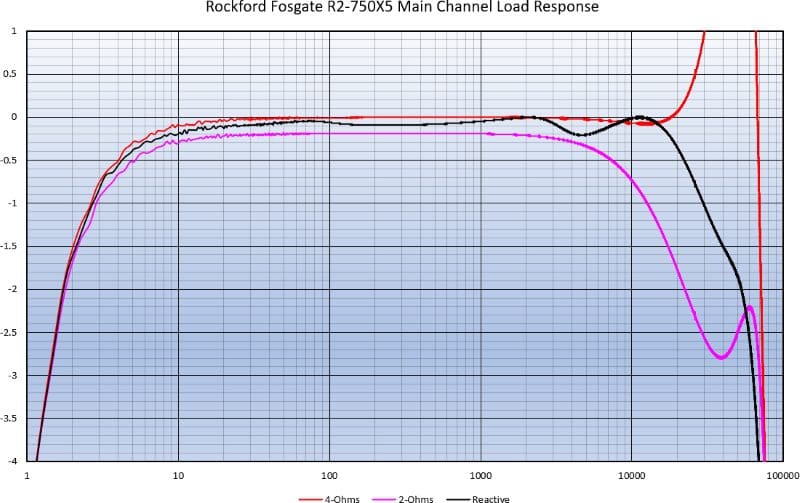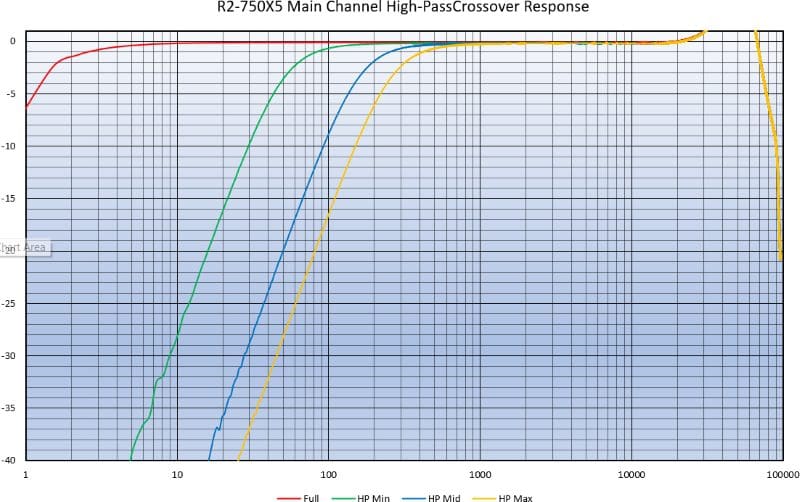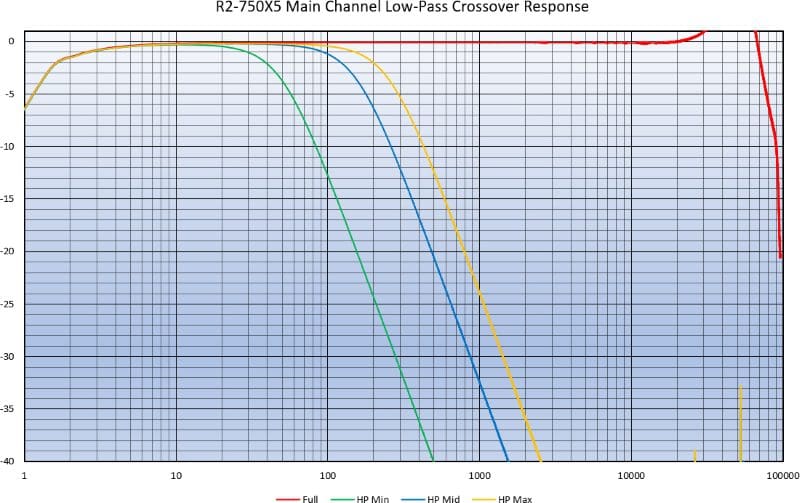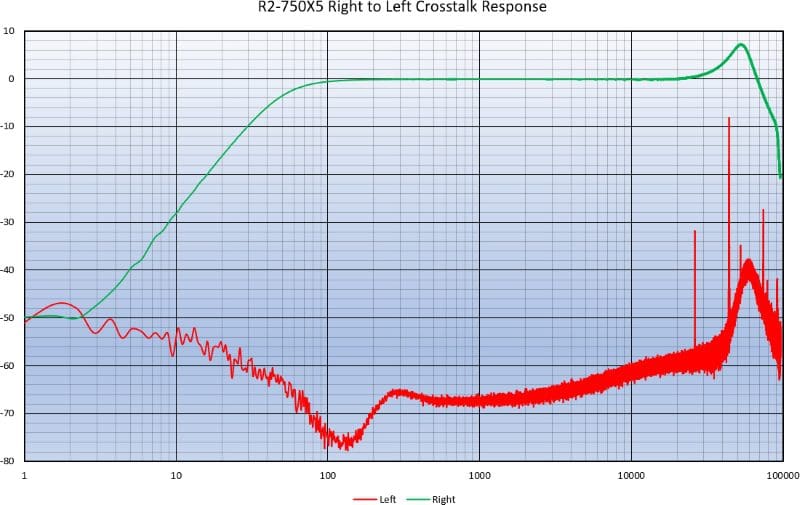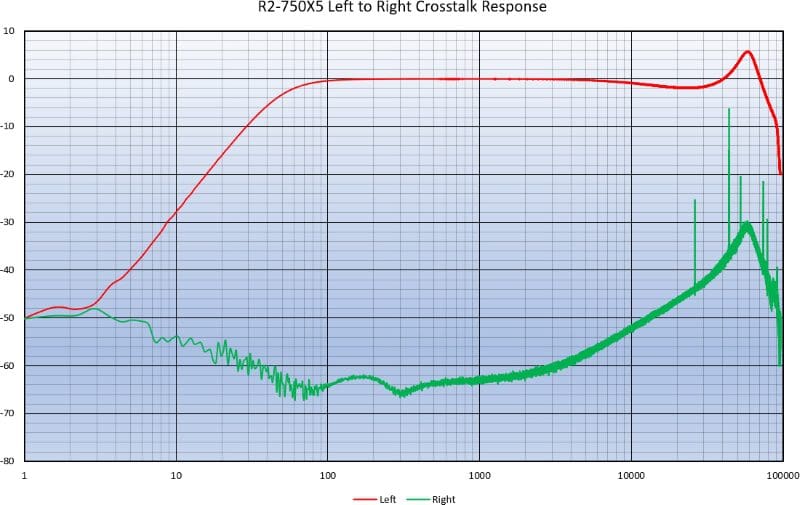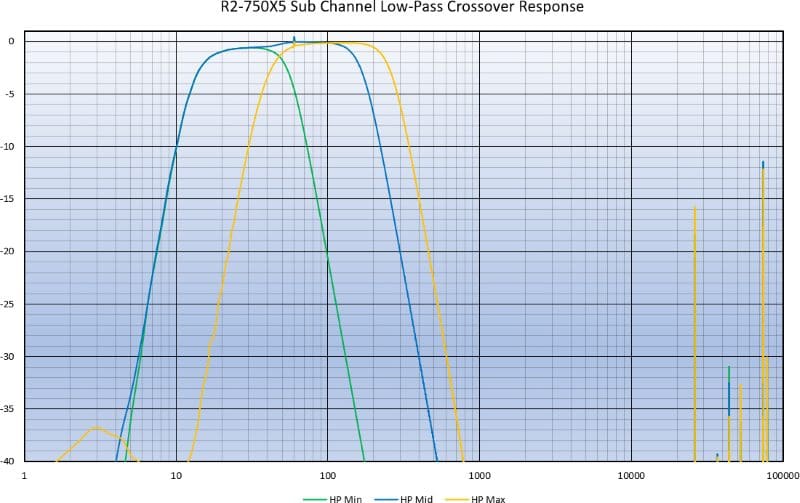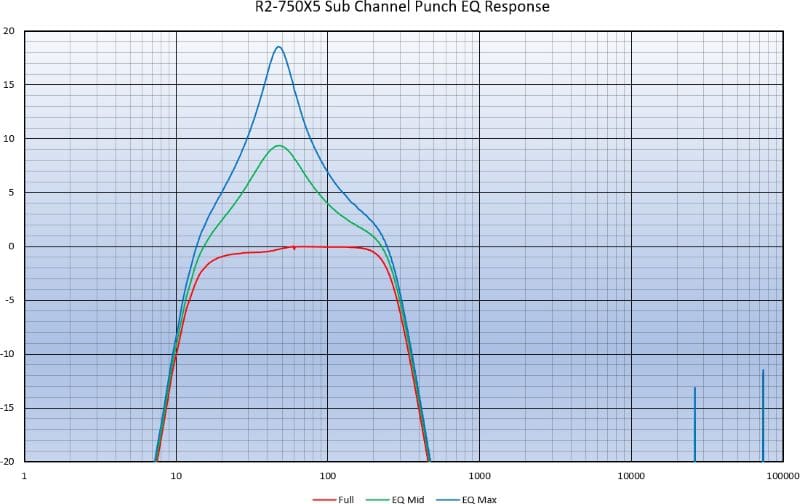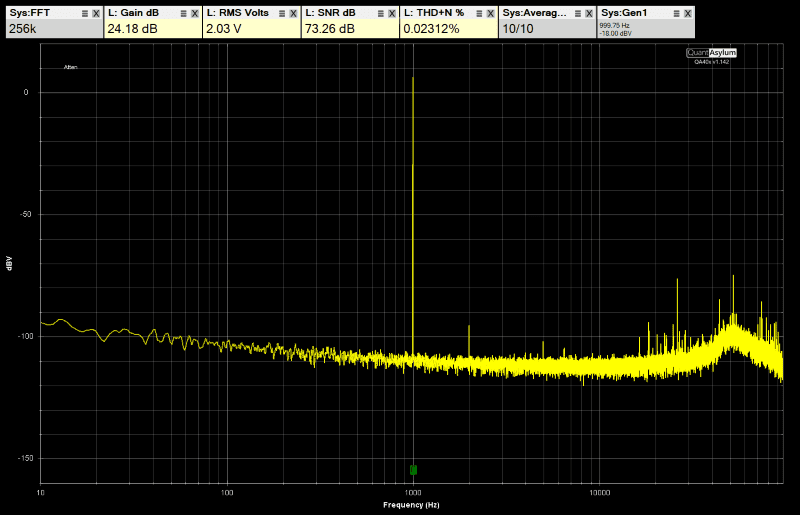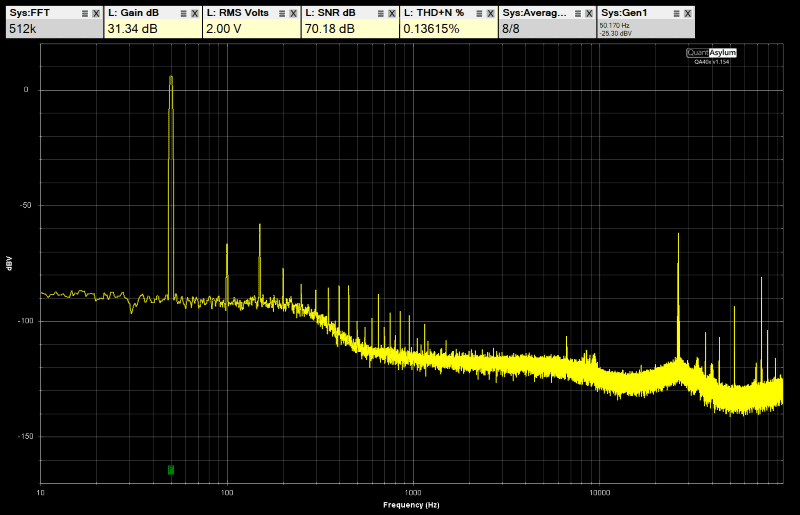As much fun as it is to test premium amplifiers and subwoofers every month, savvy car audio enthusiasts know there’s big business in high-performance solutions at more affordable price points. Our friends in Tempe, Arizona, have divided their products into good, better and best offerings to deliver solutions everyone can afford. In this Test Drive Review, we’ll check out the five-channel little brother in the family: the impressively potent Rockford Fosgate Prime Series R2-750X5.
Rockford Fosgate R2-750X5 Design
As with all full-size Rockford Fosgate amplifiers, the R2-750X5 is based on a cast aluminum extrusion to manage heat properly. The chassis measures only 6.8 inches deep and 11.2 inches wide and stands a mere 1.9 inches tall. All the power, signal and speaker connections are found along the front edge of the amplifier, while the adjustments and controls are on the top.
Regarding the connections, the leftmost is a power terminal block designed for four-AWG power and ground wires, along with a connection for the remote turn-on lead. There are two four-position speaker terminal blocks for the front and rear speakers and a two-position block for the subwoofer channel. All speaker connections will accept an eight-AWG wire. All the inputs to the terminal blocks are angled downward at 45 degrees to ensure that your installer can keep the wiring neat.
On the far right of the amp are three pairs of RCA input jacks, and to the left are three Molex plugs for the provided high-level input pigtails. The connection for the included remote subwoofer level control is mixed in with the high-level jacks.

The top panel has separate crossovers and level controls for the front and rear channels. The crossovers are adjustable from 50 to 250 Hz and have a slope of -12 dB/octave. The crossovers can function in high- or low-pass mode or completely shut off via a switch. Rockford Fosgate specifies the amplifier’s sensitivity as 150 millivolts to 4 volts on the RCA jacks and 450 mV to 12V on the speaker inputs. The amp also includes an auto-sensing turn-on circuit for use with factory-installed source units without a remote lead.
The subwoofer channel has its own gain control. It’s worth noting that markings on all the sensitivity controls are labeled from 1 to 11. You either get that, or you don’t. The low-pass crossover for the sub-channel has the same 50-to-250-hertz range. An adjustable infrasonic filter is provided with a -12 dB/octave attenuation and adjustability between 15 and 40 hertz. Finally, the sub-channel features an adjustable Punch EQ control that will allow your installer to dial in up to 18 dB of boost at 45 hertz.
New for this third generation of Prime Series amplifiers is the inclusion of Rockford Fosgate’s C.L.E.A.N. Set-Up circuitry. An LED on top of the amp will illuminate when the input signal has been optimized, and an additional three LEDs are provided to the front, rear and subwoofer channels. The output LEDs turn red when the amp reaches total power output. This feature dramatically simplifies and accelerates the system configuration process and helps ensure that your system will sound great and play with the least background noise possible.
Five-Channel R2-750X5 Specifications
Rockford Fosgate rates the R2-750X5 as capable of producing up to 50 watts of power from each of the four main channels when connected to 4-ohm loads. That number jumps to 100 watts per channel when driving 2-ohm loads. Each front and rear channel pair can be bridged to drive a single 4-ohm speaker with 200 watts of power. The subwoofer channel is rated for 200 watts into 4 ohms and a solid 350 watts into a 2-ohm load. That’s a total of 750 watts of jam from an impressively compact chassis.
All five amplifier channels use a Class D output device configuration, so efficiency should be excellent. A 120-amp fuse is suggested if you load the amp down and maximize its output capabilities. The signal-to-noise ratio for the main channels is better than 80 dB, and the sub-channel has a 75 dB rating.
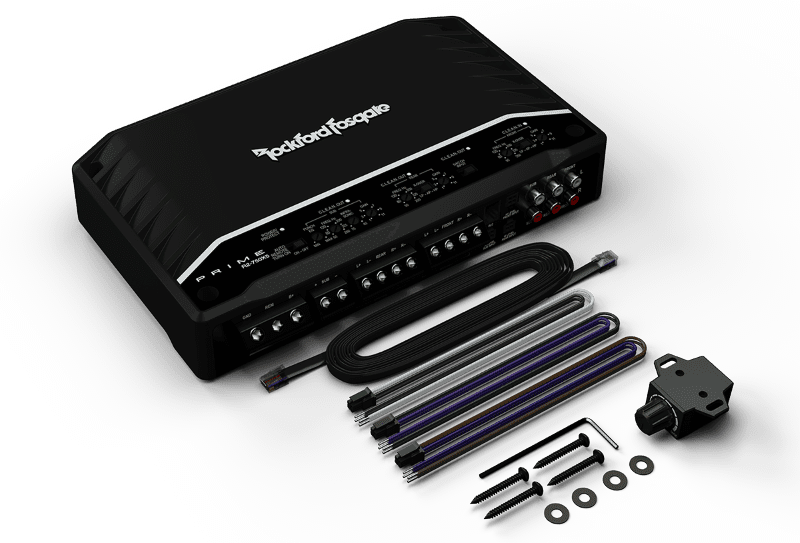
A Look Under the Hood
Usually when an amplifier arrives on my bench, I take it apart before starting any testing. Removing the stamped steel one-piece bottom and front cover reveals a densely populated circuit board. The power supply is on the left-hand side and includes an iron-core choke on the positive input to help prevent RF noise from being radiated. There are five 1,000-microfarad, 35-volt caps on the input side of the transformer. On the output side, there are two 4,700-microfarad, 63-volt and two 4,700-microfarad, 35-volt capacitors.
Without taking the amp apart to test voltages during operation, I’d say it was clear that the subwoofer output section operated at a higher rail voltage than the supply for the front and rear channels. I was impressed to see extruded aluminum hold-downs on all the power supply and output switching devices. These are a much better solution than the typical spring clamps used in other affordable amplifiers.
All of the components except for large capacitors and inductors are surface-mount devices. This demonstrates that this is a modern design. A vertically mounted daughter board is included for all the potentiometers and switches for the controls on top of the amp. Not unexpectedly, the board is supported by metal brackets on both ends and doesn’t rely on electrical connections to hold it in place. There’s a third small circuit board for two of the high-level input Molex connections, and it’s also supported by large posts. Finally, as expected, all the large components like chokes, capacitors and transformers are secured in place with a generous dollop of Silastic compound. The board design and assembly and the heatsink design match Rockford Fosgate’s quality and reliability pedigree.
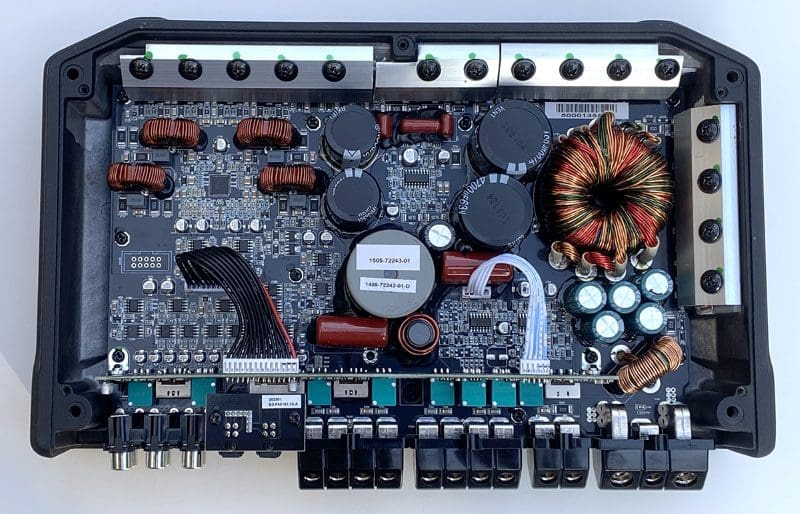
Listening Evaluation
I set the R2-750X5 up in my lab and connected it to a heavily modified DRZ9255 source unit, my bookshelf speakers and a 12-inch subwoofer. I didn’t use channels 3 and 4 in this test. Though I’ve done similar evaluations hundreds of times, I do the listening evaluations before I do the lab measurements, so I’m not subconsciously distracted by any measurements.
The first track I played was “Radio Ga Ga” by Queen from their 1984 album The Works. I noticed right away that there was clarity and definition from the bass line. The sub is musical, and the amp could control it well. There was a bit of brightness on the top end. It wasn’t sibilant to the point that it emphasized the letters S and T, but the upper percussion was highlighted.
Next, I listened to Billie Eilish’s “you should see me in a crown” from the When We All Fall Asleep, Where Do We Go? album. The bass was warm and filled the entire listening room effortlessly. The imaging was nice and tight, with good focus in the center. The sword draw or knife scrape at the beginning panned across the room perfectly. Again, there was a slight sense of brightness in the highest frequencies.
The last track was “Get Lucky” by Daft Punk from Random Access Memories. On this one, I listened to the amp at low, medium and high volume. There was no change in tonal balance or dynamics between them other than to feel the bass more and more and the objects in the room buzzing and shaking from the low-frequency energy.
The R2-750X5 isn’t what would be described as an audiophile-grade amplifier, but it behaved well and sounded good. It had enough power to drive my speakers and subwoofers to ear-damaging listening levels.
Lab Testing
With the listening evaluation complete, it was time to bring the R2-750X5 over to the lab to see how it performs in terms of measurements. I set the sensitivity controls on the amp to produce full power with a 1-volt signal. The most straightforward measurements are first with a set of frequency response sweeps of the main and subwoofer channels.
Next, I engaged the crossovers and took sweeps at the lower and upper range of the controls, along with one with the control roughly in the center. Lastly, I cranked up the Punch EQ circuit to characterize how much bass boost it adds and how narrow the equalization is. Most bass boost circuits have a moderately low Q and increase midbass and infrasonic information. Rockford Fosgate’s Punch EQ is narrower than most, so it adds the kick you want without making things sloppy.
The R2-750X5 behaved typically for a Class D amplifier in terms of load response. Going from 4 ohms to 2 ohms resulted in a drop of 0.2 dB. The reactive load was fairly smooth through the midrange, then had about 0.2 dB variance between 2 and 5.5 kHz.
The high- and low-pass crossovers on the main channels behaved quite well. The slopes match the -12 dB/octave specifications, and the -3 dB frequencies are within a few hertz of their specifications.
Regarding crosstalk, the R2-750X5 remains at or better than 60 dB through most of the audible range and only dips to about 48 dB from the left channel to the right at the highest audible frequencies. This is adequate to not significantly affect imaging.
The subwoofer channel frequency response has a small shelf in the response at 50 Hz, but this will be insignificant in a vehicle. The low-pass crossover and adjustable infrasonic filter also performed excellently.
It’s been about five decades since the world first experienced the Punch EQ circuit. Having it on the sub-channel allows your installer to add a kick to the bottom end of a sealed enclosure or help your ported system put up some numbers in an SPL contest. I measured 18 dB of boost at 47 hertz with the EQ controlled pinned to the right.
Up next, it was time to characterize noise and distortion. For the main channels, I used a 1-kHz tone at 2 volts, which equates to the amp producing 1 watt of power. I used 50 hertz at the same voltage for the subwoofer channel. These are the frequencies recommended by the ANSI/CTA-2006-C standard.
In terms of noise and distortion, I fed the front channels with a 1-kHz test tone and measured the spectral response. My audio analyzer reported 0.02312% THD+N, which aligns with a Class D amplifier. The signal-to-noise ratio was -73.26 dB, a tad off their specified -80 dB mark at an output of 1 watt. With that said, it’s SO much better than many so-called “affordable” amplifiers I’ve tested over the last few months. The distortion and SNR measurements were nearly identical when driving a 2-ohm load, which is impressive – they usually jump up a fair amount.
I tested the distortion on the subwoofer channel using a 50-hertz tone. My audio analyzer measured a 0.13615% THD+N value, weighted by slightly high background noise. The signal-to-noise ratio was measured at -70.18 dB.
Last but certainly not least, it was time to measure the power output capabilities of the R2-750X5. I started with the four main channels driving 4-ohm loads and the subwoofer driving a 2-ohm load; then, I switched the main loads to 2 ohms to max out the amplifier. These are going to be the two most popular configurations. Remember that Rockford Fosgate’s power specifications comply with the ANSI/CTA-2006C standard at 14.4 volts. All my measurements are under 14V (as noted), so some power is definitely left on the table, particularly on the subwoofer channel.
The amp would exceed all its power ratings at 14.4 volts. What’s crucial to note is that the amp is exceptionally efficient. If you have a vehicle that didn’t come with a colossal alternator, then the R2-750X5 is an excellent choice. With all five channels loaded to 2 ohms and producing full power, the amp drew just a hair over 60 amps of current. That’s awesome!
Test Drive Review Conclusion
I’m often spoiled by the caliber of equipment I’m invited to test. When something that’s good but much more affordable enters the lab, quantifying its value-to-performance ratio can be challenging.
Here are the highlights of the R2-750X5: It makes the power it claims when supplied with adequate voltage. It’s stunningly efficient so that it won’t overtax your electrical system. It sounds good and delivers good dynamics and solid bass. Finally, it has all the features your installer will need to create a fantastic car audio upgrade. Rockford Fosgate designed the R2-750X5 to deliver stable, reliable performance at a specific price. I say they hit their mark on all counts.
If you want to add a subwoofer and bring your existing car speakers to life, drop by a local authorized Rockford Fosgate retailer and ask about the Prime Series R2-750X5. You can find a dealer using the locator on their website. Be sure to follow our car audio fanatic friends from Tempe on Facebook, Instagram and YouTube to learn about the latest solutions they’ve created for your car, motorcycle, boat or powersports vehicle.

